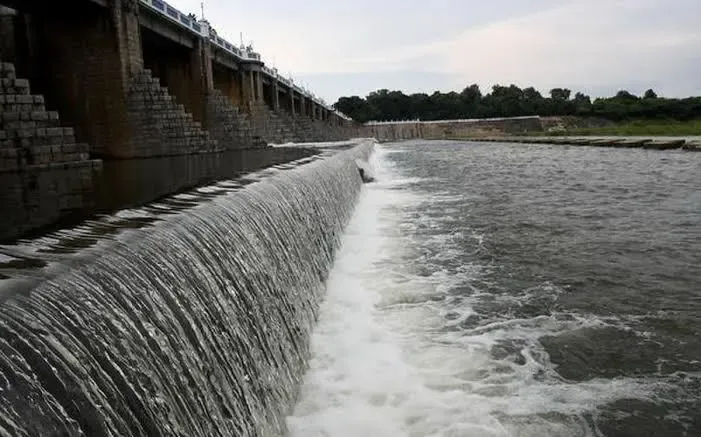Are Chennai’s Major Water Reservoirs Nearing Full Capacity Due to Heavy Rain?

Synopsis
Key Takeaways
- Chennai’s reservoirs are nearing full capacity due to rainfall.
- Puzhal lake is almost full, holding 91.9% of its capacity.
- Cholavaram reservoir remains significantly low.
- Northeast monsoon impacts overall water supply positively.
- Ongoing management is vital for sustainable water use.
Chennai, Oct 15 (NationPress) With persistent rainfall and heightened inflow from surrounding catchment regions, Chennai’s primary drinking water reservoirs are swiftly nearing their full capacity, instilling optimism for a robust water supply in the forthcoming months.
Data from the Tamil Nadu Water Resources Department reveals that the Poondi, Puzhal, Chembarambakkam, Red Hills, and Cholavaram reservoirs -- which collectively serve Chennai’s drinking water requirements -- currently retain 8.328 thousand million cubic feet (TMC ft) of water out of a combined capacity of 11.757 TMC ft, equating to a commendable 70.9 percent storage level.
Among these, the Puzhal lake, a critical water source for Chennai, has reached a water level of 20.11 ft, nearing its maximum capacity of 21.20 ft. The present storage stands at 3.034 TMC ft, or 91.9 percent of its total capacity. The lake is currently receiving inflow of 210 cubic feet per second (cusecs), with a nearly equal discharge of 209 cusecs.
The Cholavaram reservoir, on the other hand, remains comparatively low, with a water level of 4.58 feet (out of a maximum of 18.86 feet) and a storage of 0.181 TMC ft, which is 16.7 percent of its full capacity. It presently receives 20 cusecs and discharges six cusecs.
At Chembarambakkam, the water level is at 17.96 feet, holding 2.126 TMC ft, or 58.3 percent of capacity. The lake is receiving 705 cusecs of inflow and releasing 195 cusecs towards Metro Water, SIPCOT, and irrigation channels.
The Poondi reservoir is currently holding 2.559 TMC ft at a level of 33.13 feet, representing 79.2 percent of its storage capacity. Inflow is 1,390 cusecs, while discharge is noted at 787 cusecs.
The Red Hills reservoir (also referred to as Thervoy Kandigai) is presently at 34.41 feet, storing 0.428 TMC ft, or 85.6 percent of its total capacity, with a discharge of 17 cusecs. Officials reported that 3.272 TMC ft of Krishna water has reached Chennai thus far, with 297 cusecs being released at a level of 1.15 metres.
While Poondi and Puzhal are nearly at full capacity, Chembarambakkam is moderately filled, and only Cholavaram remains low.
With the northeast monsoon not yet at its peak, Chennai’s overall water situation appears significantly stable this season, as confirmed by officials.









